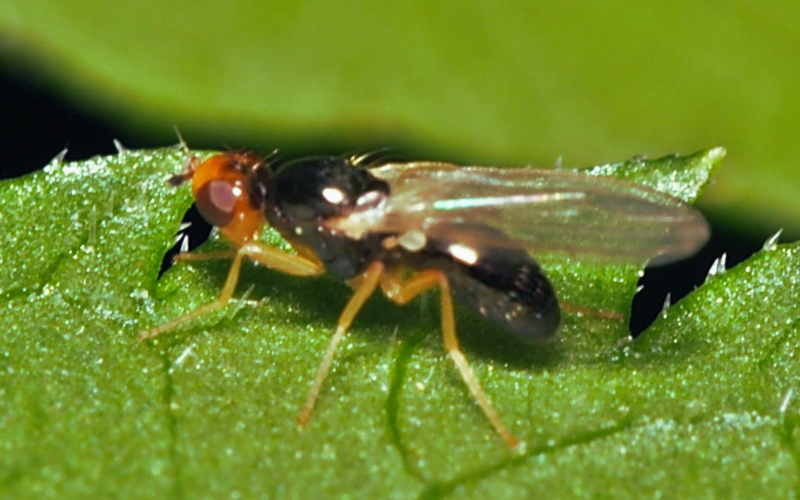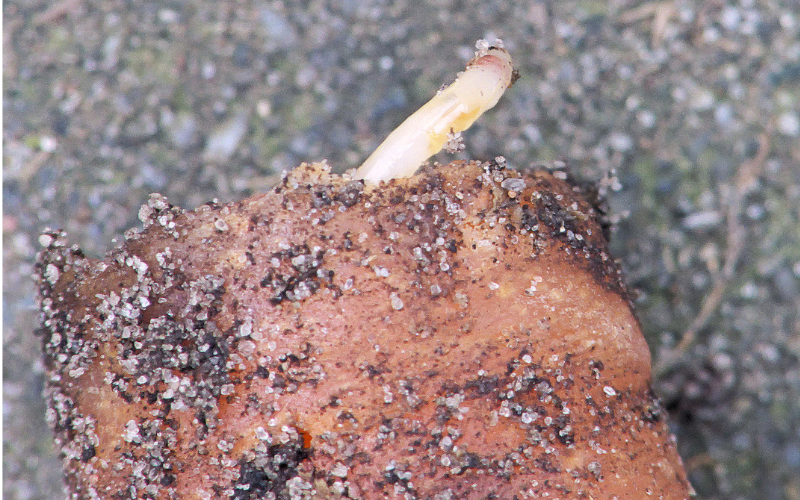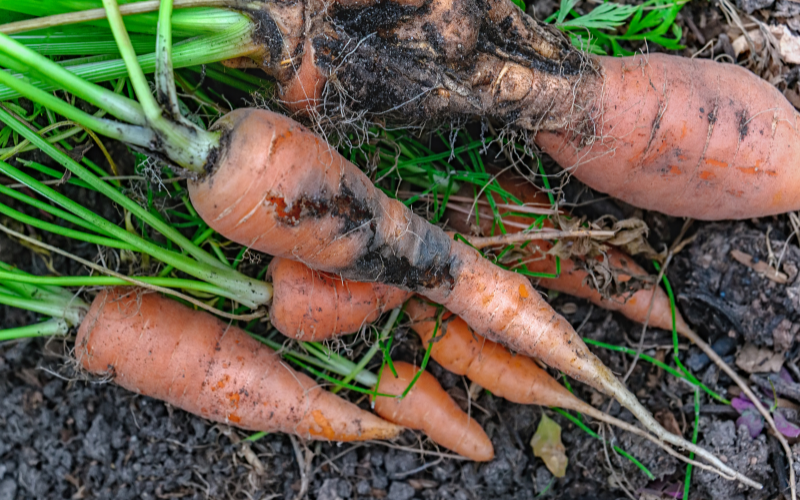The carrot rust fly, sometimes simply known as the carrot fly, is a tiny but destructive insect that primarily targets carrots and other root vegetables of the same family. These flies can cause significant damage to these vegetables, making them unsuitable for consumption.
In this blog post, we will find out exactly which life stage of carrot rust flies actually damages the root vegetables, what the damage looks like, and most importantly, how to effectively prevent damage and protect your root vegetables.
What are carrot rust flies?
Carrot rust flies (Psila rosae or Chamaepsila rosae) are small insects with slender legs and long thing wings and a black body segmented into three parts.

It is their larvae, which are yellowish-white, long, and thin, that cause damage to the vegetables.

Apart from carrots, carrot rust flies can also damage parsnips, celery, and parsley, which are of the same plant family. These flies are pests of vegetables in areas with cool to temperate climates worldwide.
The life cycle of the carrot rust fly
The life cycle of the carrot rust fly consists of four main stages: egg, larva, pupa, and adult. Adult flies emerge from overwintering pupae in early spring, usually around April or May, depending on the local climate. They are highly attracted to the scent of carrot foliage and lay their eggs near the base of carrot plants.
Larvae hatch from the eggs within a week, and these tiny, white maggots burrow into the soil to feed on the root tissues. Carrot rust fly larvae can cause extensive damage by tunneling through the roots, leading to stunted growth, discoloration, and a foul odor.

After feeding for approximately three weeks, the larvae pupate in the soil, and a new generation of adult flies emerges to repeat the cycle.
Signs of carrot rust fly damage

It’s important to note that carrot rust fly damage can sometimes be confused with other root pests or diseases. Here are some common indicators to look out for:
- Wilting and Yellowing Foliage: Carrot rust fly larvae feed on the roots of the host plants, causing damage to the vascular system. As a result, the foliage above-ground may start to wilt, turn yellow, or appear stunted. This is due to the lack of water and nutrient uptake by the damaged roots.
- Tunnels and Tracks: The larvae of carrot rust flies create tunnels or tracks within the carrot roots as they feed. These tunnels can be seen when harvesting or pulling up affected plants. The tunnels may appear as brown or discolored areas within the root, and in severe cases, the entire root may be tunneled.
- Discolored and Rotting Roots: Infested carrot roots often show signs of discoloration, such as darkening or browning. The damage caused by the larvae can lead to the rotting of the roots, accompanied by a foul odor. The affected roots may become soft and mushy, making them unsuitable for consumption.
- Stunted Growth and Reduced Yields: Carrot rust fly larvae feed on the root system, which can stunt the overall growth of the plant. Infested carrots are often smaller in size and have reduced yields compared to unaffected plants. The damage caused by the larvae can result in deformities or twisted roots as well.
- Presence of Adult Flies: Another sign of carrot rust fly infestation is the presence of adult flies near the plants. Adult flies are most active during the day and can often be observed flying around the plants or resting on the foliage.
How to protect your vegetables from carrot rust fly damage?
- Crop Rotation: Practicing crop rotation is an effective strategy to minimize carrot rust fly infestations. By moving your carrot crops to a different area of the garden each year, you disrupt the fly’s life cycle and reduce the likelihood of re-infestation. Ideally, wait at least three years before replanting carrots or a vegetable plant of the same family in the same spot. Read more about crop rotation
- Floating Row Covers: Physical barriers like floating row covers provide a protective shield against carrot rust flies. Covering your carrot plants with lightweight fabric immediately after sowing or transplanting helps prevent adult flies from laying eggs on the soil surface. Ensure the covers are securely fastened to prevent any gaps that may allow entry for the flies.
- Timing: Timely planting is crucial to avoid the peak activity of carrot rust flies. Consider planting your carrot crops earlier or later in the season when the flies are less active. Additionally, monitoring local pest forecasts can help you plan your planting schedule accordingly.
- Companion Planting: Certain plants are known to repel carrot rust flies. Interplanting carrots and other potential host plants with aromatic companion plants, such as onions, leeks, sage, rosemary, tansy, and marigolds, can help deter the flies from potential host plants. Read more about companion planting
- Disturbing pupae: During the winter months, carrot rust flies enter a dormant stage as pupae in the soil. They require undisturbed overwintering sites. Regularly removing any crop debris and weeds helps eliminate potential hiding places for overwintering pupae. Tilling the soil before planting can disrupt any pupae in the soil, further reducing potential fly populations.
- Biological Control: Introducing beneficial insects, such as parasitic wasps, ground beetles, lacewings, predatory mites, and nematodes, can help to naturally control carrot rust flies. These predators specifically target the larvae or pupae, providing an eco-friendly method of reducing pest populations. Not using harsh chemicals can encourage these beneficial insects into your garden. Read more about natural pest control
In conclusion, carrot rust flies can cause severe damage to carrots and other related vegetables. Understanding their life cycle can help you disrupt the same to protect your vegetables from potential damage.

